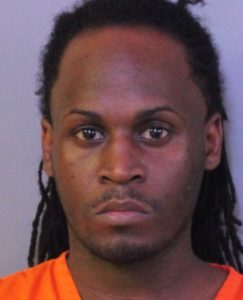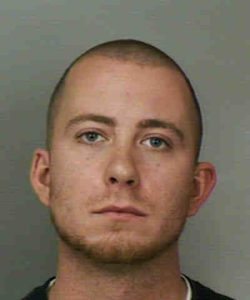Noah Worthington was angry when he found out he’d been fired from his job as a truck driver.

Noah Worthington
Another employee was sent to retrieve the truck from Worthington. But instead of gathering his belongings and handing over the keys, Worthington struck the employee and drove away in the stolen semi.
A jury convicted Worthington on Jan. 18 of robbery with a deadly weapon and aggravated battery with a deadly weapon causing great bodily harm. He is facing 20 years in prison and will be sentenced March 2.
Although it’s been almost 15 months since Tyler Reeve was struck in the right leg with the semi, he still deals with constant pain. Reeve has had numerous surgeries and is unable to do a lot of simple things on his own.
Assistant State Attorney Seth Solomon questioned Reeve, who walked jurors through the events of Nov. 1, 2016.
Reeve and another employee of Leonard’s Express – a truck driving company – were sent to where Worthington had dropped off his last truckload. They were told to retrieve the semi because Worthington had been disqualified as a truck driver and could no longer work for the company.
Worthington was asked to gather his personal belongings from the semi, which took him nearly an hour. But Worthington got back in the driver’s seat, cranked the vehicle, and backed it up a few feet.
Reeve began waving his arms at Worthington and stepped in front of the vehicle in an attempt to keep him from leaving. But Worthington put the truck in gear and sped forward, striking Reeve with the front bumper of the truck.
The force of the truck knocked Reeve down, but he was able to roll out of the vehicle’s path to avoid being hit again.
Worthington then drove the semi-truck to Jacksonville and left it there.
During trial, Worthington took the stand and claimed that during the hour he was gathering his personal belongings, he had a conversation with Ron Scafaro – the operations manager of the truck company.
Worthington was from New York, and his closest friends lived in Jacksonville. He told jurors that he asked Scafaro for permission to take the truck to Jacksonville, where he would then find his own way home.
He claimed Scafaro’s answer was yes.
But when Scafaro had taken the stand earlier in the trial, he testified that he never agreed to the vehicle staying in Worthington’s possession.
Worthington also claimed that he never struck Reeve in the leg.
But in closing arguments, Solomon reminded jurors that every point of Worthington’s testimony was not supported by any other testimony during the trial.
“Ron (Scafaro) came in here and testified, and every step of the way he contradicted what the defendant said and backed up what Tyler (Reeve) said,” Solomon told the jury. “The differences in the defendant’s testimony are each key point that’s critical to the crime.”
The defense argued there was no robbery because the vehicle was never in Reeve’s possession, which meant there was no force used in taking it away.
“Worthington did not have permission to use the truck for anything other than to get his belongings. That’s the only reason he still had the keys,” Solomon said. “And I can’t imagine a greater force of violence than hitting someone with a semi-truck.”
“All aspects of Scafaro’s plan were communicated to all parties, and the defendant did not follow those aspects,” Solomon told jurors, adding that he was confident the testimony showed Worthington was guilty.










